The EDR-209 is a ruggedized digitizer providing three or six independent channels of extremely high dynamic range at rates of 1 to 3,000 Hz. A selectable conversion word size of up to 32-bits is available for fully representing the high dynamic range.
SIGNAL TO NOISE
A signal to noise ratio of typically 142 dB is achieved at a sample rate of 100 Hz falling to 125 dB at 1,000 Hz using a 24-bit word. 150 dB is obtained below 10 Hz when a 32-bit word size is selected.
The signal bandwidth is always d.c. to 0.4 of the selected sample rate (± 0.1 dB) with over 140 dB of rejection above the half sampling frequency, negating any requirement for anti-alias filtering.
INPUTS
Inputs are fully differential with a common mode rejection better than 100 dB. There are three sensitivity settings: 2.5 µV, 1 µV and 100 nV per bit. About 4 dB of dynamic range is lost on the highest gain setting. Input offset voltage and gain variations are held to very low levels. Optionally the offset with temperature can be mapped during manufacture and used to correct the offset during operation. Calibration occurs automatically every time the unit is switched on.
CONVERTERS
The converters use a 7th order Delta Sigma technique developed by Earth Data. In addition to their high dynamic range they are also free from spurious tones and artefacts present in alternative designs.
GPS
The unit is fitted with a GPS receiver to provide it with a timing accuracy better than 10 µs and provide accurate positional data. The unit is fitted with a 1 ppm TXCO that enables it to still provide accurate timing in the absence of a GPS signal, optionally, alternative time sources can be used such as NTP servers.
POWER SUPPLY
Power supply voltage, current and internal temperatures are continuously monitored and reported. Four additional low resolution ADC inputs are available for driving external equipment.
CONNECTION & INTERFACES
The EDR-209 can be configured and monitored via any standard HTTP web browser, in addition, it can also be configured as a SeedLink server enabling communication with external seismic systems. The internal mass storage media can be employed to store data in Mini-SEED format, or alternatively external mass storage units can be directly connected via USB. The unit supports the FTP and RSYNC protocols should remote users wish to download / synchronize any stored data files.
OPERATION
The EDR-209 is available in a fully sealed extruded aluminium case or as a board only OEM product. Operating temperature range is -20 °C to +60 °C.

* HDD - Hard Disk Drive; SSD - Solid State Drive
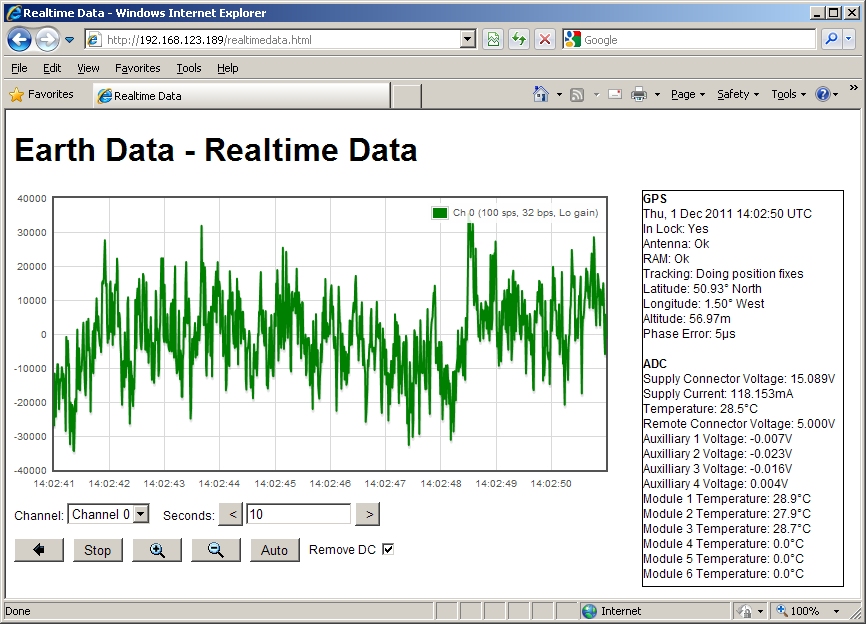
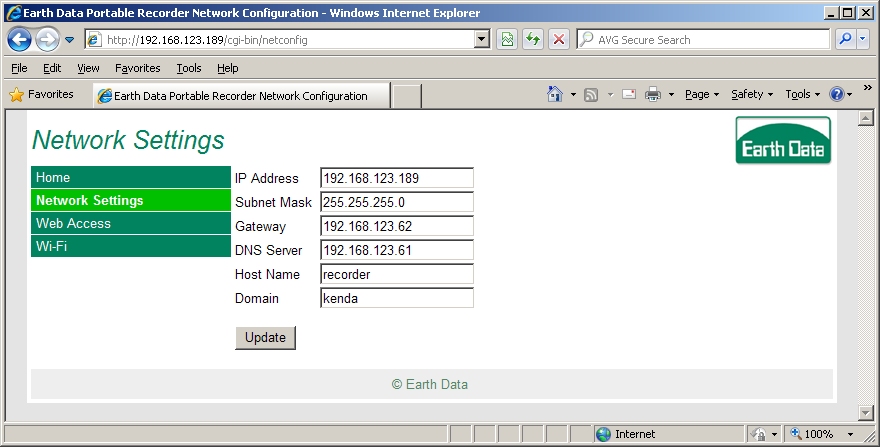

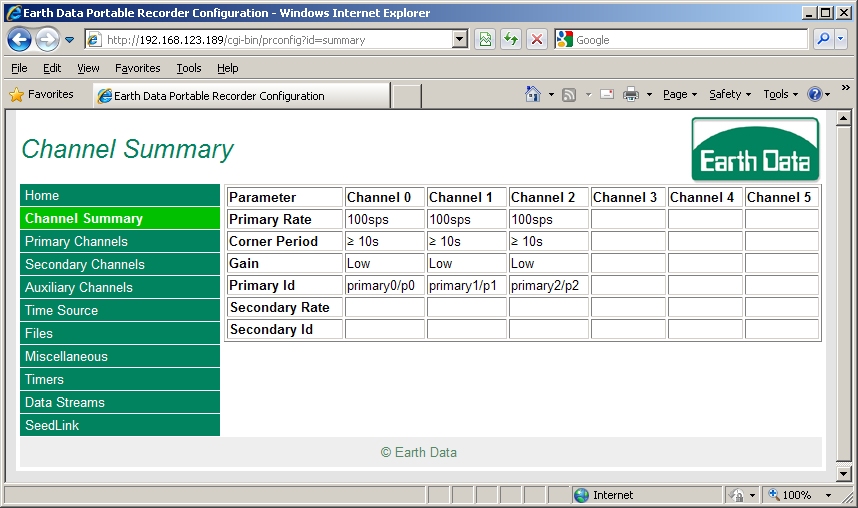
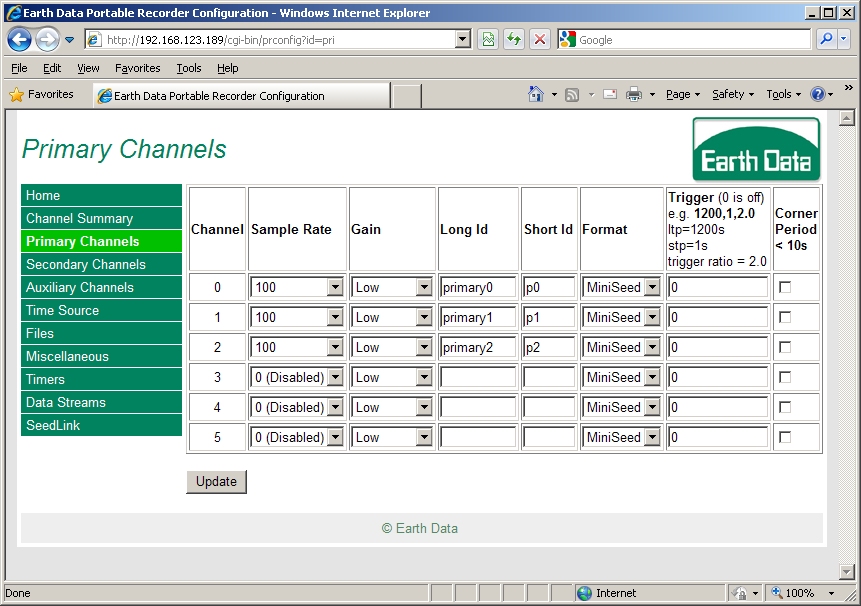
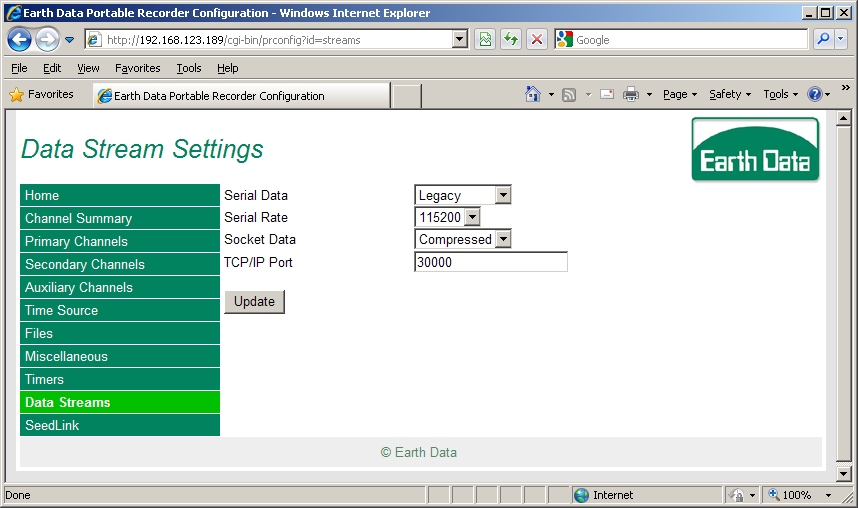
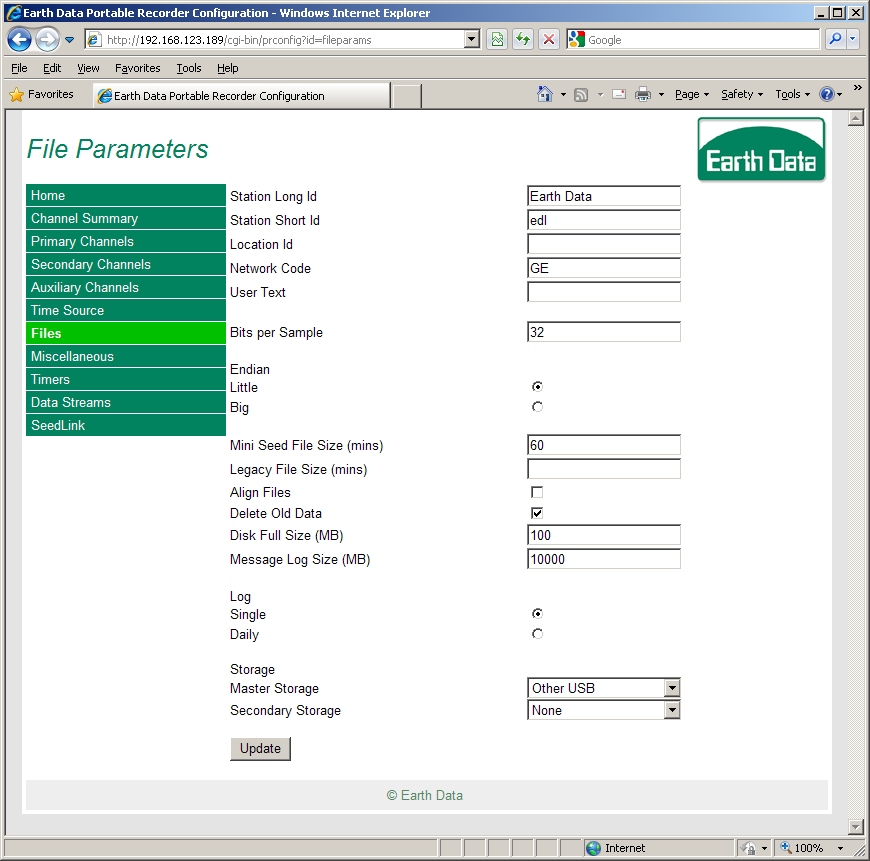
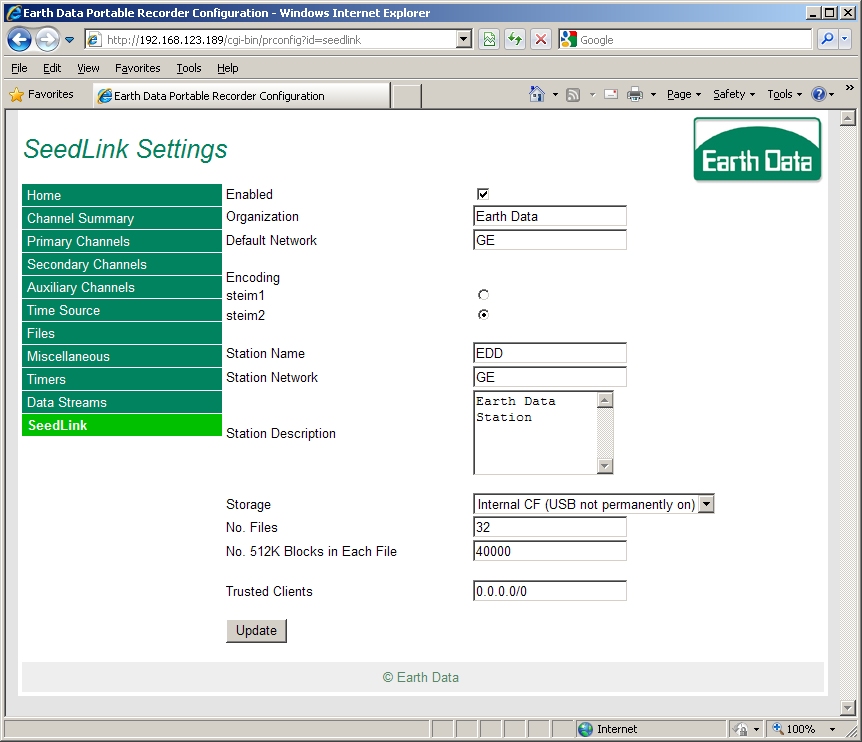
The SeedLink protocol is a robust data transmission intended for use on the Internet or private circuits that support TCP/IP.
The protocol is robust in that clients may disconnect and reconnect without losing data, the transmission is started where it ended.
Requested data streams may be limited to specific stations, locations and/or channels. All data packets are 512-byte Mini-SEED records.
Available Software
The following software is available from the DMC at
http://www.iris.edu/pub/programs/SeedLink/ :
libslink - A SeedLink client library written in C.
slink2orb - SeedLink to Antelope ORB client (licensed Antelope libraries are required).
slink2ew - SeedLink to Earthworm client. Windows binaries available.
slarchive - A SeedLink client that writes all received data to the local disk in user defined directory and file structures.
slinktool - Command line SeedLink client useful for data stream inspection and server testing.
ewexport_plugin - An Earthworm export process plugin (data source) for a seedlink server.
orbplugin - An Antelope ORB plugin (data source) for a seedlink server (licensed Antelope libraries are required).
SeedLink was originally created as the transport layer for the SeisComP package developed by GEOFON.